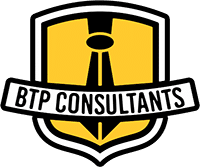In the world of security services, staying compliant with Occupational Safety and Health Administration (OSHA) regulations is more than just ticking a box—it’s about safeguarding lives, avoiding costly penalties, and fostering a culture of safety within your organization. For an OSHA security company, developing a comprehensive compliance strategy is essential to navigating the complex web of regulations that govern workplace safety. Whether you’re managing a small team or overseeing large-scale operations, understanding and adhering to OSHA guidelines can mean the difference between a secure, thriving business and one mired in legal troubles and reputational damage
In this article, we’ll explore why every OSHA security company needs a robust compliance strategy, the key regulations that apply to security operations, and how implementing these strategies can protect your employees and clients alike. From reducing workplace hazards to enhancing your company’s reputation, the benefits of OSHA compliance are clear. But the path

A security manager using digital tools to audit safety compliance, with OSHA security company data displayed on a tablet.
Understanding the Importance of OSHA Compliance for Security Companies
As an OSHA security company, maintaining compliance isn’t just a regulatory obligation—it’s a cornerstone of your operational integrity. The Occupational Safety and Health Administration (OSHA) sets forth stringent guidelines designed to protect workers across all industries. For security companies, these regulations ensure that both employees and clients are protected from workplace hazards, while also mitigating the risk of costly fines and legal issues. Compliance is not merely a task to check off a list; it is a proactive approach to creating a safe and efficient working environment.
Key OSHA Regulations Relevant to Security Operations
Security operations come with their own unique set of risks and challenges. OSHA regulations address these by mandating specific safety measures tailored to the security industry. Key regulations include:
- General Duty Clause: Requires employers to provide a workplace free from recognized hazards.
- Hazard Communication Standard: Mandates that employees are informed about chemical hazards they may encounter.
- Personal Protective Equipment (PPE) Requirements: Ensures that all necessary safety gear is provided and maintained.
These regulations are designed to prevent injuries and fatalities, making adherence to them critical for any OSHA security company.
The Role of Hazard Communication in Security Operations
One of the most crucial aspects of OSHA compliance is hazard communication. Security personnel may encounter various chemical hazards during their duties, from cleaning agents to more dangerous substances in high-risk areas. The Hazard Communication Standard requires employers to maintain a written program that includes proper labeling, safety data sheets (SDS), and employee training. This ensures that all personnel are fully aware of the risks associated with hazardous materials and know how to handle them safely.
Implementing a Robust Workplace Safety Program
Creating a comprehensive workplace safety program is the bedrock of OSHA compliance. This program should be tailored to the specific needs of a security company and should include:
- Regular Safety Audits: Conduct thorough inspections to identify potential hazards.
- Employee Training: Offer continuous training on safety procedures, use of PPE, and emergency response.
- Accident Reporting and Investigation: Implement a clear process for reporting incidents and conducting investigations to prevent future occurrences.
A well-executed safety program not only meets OSHA standards but also enhances overall workplace safety and morale.
Why Regular Safety Audits are Essential
Regular safety audits are a key component of maintaining OSHA compliance. These audits help identify potential hazards before they become serious issues, allowing the company to address them proactively. For an OSHA security company, audits should cover all aspects of operations, from equipment checks to employee behavior. By regularly reviewing safety procedures and making necessary adjustments, companies can significantly reduce the risk of accidents and ensure that they remain compliant with OSHA regulations.
Employee Training: A Critical Component of Compliance
Training is an essential element of OSHA compliance, especially in the security industry, where employees often face high-risk situations. Comprehensive training programs should cover:
- Proper Use of PPE: Ensuring employees know how to correctly wear and maintain their protective gear.
- Emergency Procedures: Training on how to respond effectively to various emergencies, such as fires or chemical spills.
- Ongoing Education: Providing regular updates on OSHA regulations and best practices to keep all staff informed and prepared.
Investing in thorough training not only ensures compliance but also empowers employees to perform their duties safely and effectively.
Recordkeeping and Reporting: The Backbone of Compliance
Accurate recordkeeping and timely reporting are vital for demonstrating OSHA compliance. This includes maintaining records of workplace injuries, illnesses, and inspections. Proper documentation helps in tracking safety trends, identifying areas for improvement, and ensuring that all OSHA requirements are met. Additionally, in the event of an inspection or incident, having detailed records readily available can protect the company from potential fines and legal challenges.
The Benefits of OSHA Compliance for Security Companies
Adhering to OSHA regulations offers numerous benefits beyond avoiding fines. These include:
- Enhanced Employee Safety: A compliant workplace is a safer workplace, reducing the risk of injury and illness.
- Improved Employee Morale: When employees feel safe, their job satisfaction and productivity increase.
- Reputation Boost: Clients and partners are more likely to trust a company that demonstrates a strong commitment to safety.
In essence, OSHA compliance not only protects your business legally but also strengthens your overall operations.


A team of OSHA security company personnel participating in a training session focused on OSHA security company compliance procedures.
Technology and OSHA Compliance
In today’s digital age, technology plays a significant role in maintaining OSHA compliance. Tools such as digital recordkeeping software and safety management systems streamline the compliance process, making it easier to track and manage safety data. Additionally, advancements in wearable technology, such as smart PPE, can provide real-time monitoring of environmental conditions, further enhancing workplace safety.
Common Challenges in Achieving OSHA Compliance
While the benefits of OSHA compliance are clear, the path to achieving it can be challenging. Common obstacles include:
- Complexity of Regulations: OSHA regulations are extensive and can be difficult to navigate without proper guidance.
- Resource Constraints: Smaller companies may struggle with the financial and human resources required to maintain compliance.
- Resistance to Change: Employees and management may resist the implementation of new safety measures, especially if they require significant changes to existing processes.
Overcoming these challenges requires a committed approach to safety, continuous education, and the willingness to invest in necessary resources.
The Financial Impact of Non-Compliance
Non-compliance with OSHA regulations can have severe financial repercussions. Fines for violations can range from thousands to hundreds of thousands of dollars, depending on the severity of the infraction. Moreover, the indirect costs, such as legal fees, increased insurance premiums, and lost productivity, can further strain a company’s finances. Therefore, investing in compliance is not just a regulatory necessity but a sound financial strategy.
Legal Implications of OSHA Violations
In addition to financial penalties, OSHA violations can lead to legal challenges, including lawsuits and increased scrutiny from regulatory bodies. For an OSHA security company, these legal battles can be both time-consuming and damaging to its reputation. Understanding the legal landscape and ensuring full compliance with OSHA regulations is crucial for mitigating these risks.
Case Studies: The Consequences of Non-Compliance
Several high-profile cases have highlighted the severe consequences of OSHA non-compliance. In many instances, companies have faced crippling fines, legal actions, and even criminal charges following workplace accidents that were traced back to safety violations. These cases serve as stark reminders of the importance of maintaining rigorous compliance standards.
OHSA Security Company: A Commitment to Safety
For an OSHA security company, compliance with safety regulations is not just about avoiding penalties—it’s about building a culture of safety that permeates every aspect of the organization. By committing to a comprehensive compliance strategy, security companies can protect their employees, safeguard their clients, and enhance their reputation in the industry.
FAQs About OSHA Security Companies Near Me
To develop an effective OSHA compliance strategy, a security company should start by conducting a thorough worksite analysis to identify potential hazards. Next, they should implement a comprehensive safety program that includes regular employee training, safety audits, and a clear process for reporting and investigating incidents. Finally, they should ensure that all safety procedures are documented and that records are maintained in compliance with OSHA standards.
OSHA compliance directly benefits employees by creating a safer work environment, reducing the risk of injury and illness. Compliance also leads to higher employee morale, as workers feel more secure knowing that their employer is committed to their safety. This can lead to increased job satisfaction and productivity.
Non-compliance with OSHA regulations can result in severe financial consequences, including hefty fines, legal fees, increased insurance premiums, and potential lawsuits. The indirect costs, such as lost productivity and damage to the company’s reputation, can also have a long-term impact on the business’s bottom line.
Technology plays a significant role in OSHA compliance by streamlining processes such as recordkeeping and safety data management. Digital platforms can automate the tracking of safety incidents, training sessions, and equipment maintenance. Wearable technology, such as smart PPE, can provide real-time monitoring of environmental conditions, further enhancing workplace safety and compliance.
Regular safety audits are crucial because they help identify potential hazards before they lead to accidents or violations. These audits allow security companies to proactively address any safety concerns, ensuring that all operations remain compliant with OSHA regulations and that the workplace is as safe as possible for employees and clients.
OSHA regulations that are particularly relevant to security companies include the General Duty Clause, which mandates a workplace free from recognized hazards; the Hazard Communication Standard, which ensures employees are informed about chemical hazards; and Personal Protective Equipment (PPE) requirements, which ensure that all necessary safety gear is provided and maintained. These regulations are designed to protect employees from common workplace risks associated with security operations.
Incorporating Proven Strategies for OSHA Compliance
To fully grasp the importance of a comprehensive OSHA compliance strategy for your security company, it’s crucial to consider insights from industry leaders who emphasize the pivotal role of safety in the workplace. According to EHS Insight, understanding and adhering to key OSHA regulations not only protects your workforce but also significantly reduces costs associated with workplace injuries, while simultaneously boosting overall productivity (EHS Insight).
The Role of Safety Culture and Risk Evaluations
Equally important is the emphasis on fostering a strong safety culture and conducting regular risk evaluations. HSE Blog highlights these practices as essential components of maintaining a safe and compliant work environment. By embedding safety deeply into your company’s ethos and routinely assessing potential risks, you can proactively prevent incidents before they occur, ensuring a safer workplace for all (Occupational Health and Safety Blog).
Leveraging Technology and Training for Compliance
Furthermore, the integration of technology and proper training is vital for ensuring OSHA compliance. Occupational Health & Safety Online emphasizes that adopting advanced safety technologies and providing continuous training to employees can greatly improve safety outcomes and help in maintaining compliance with OSHA standards. These strategies not only enhance safety but also contribute to the overall operational excellence of your security company (Occupational Health & Safety).
By incorporating these proven strategies and tools, your security company can achieve the high standards necessary for both legal compliance and a safer, more efficient work environment.
Let’s Recap What We Learned About OSHA Security Companies Near Me
For every OSHA security company, compliance with safety regulations is not just a legal requirement but a vital aspect of operational success. A comprehensive compliance strategy ensures that the company not only meets regulatory standards but also fosters a culture of safety that protects employees, clients, and the business itself. By investing in regular audits, continuous employee training, and leveraging technology, security companies can navigate the complexities of OSHA regulations with confidence and create a safer, more efficient working environment. The benefits of such a strategy are clear—enhanced safety, improved morale, financial savings, and a stronger reputation in the industry.







Leave A Comment